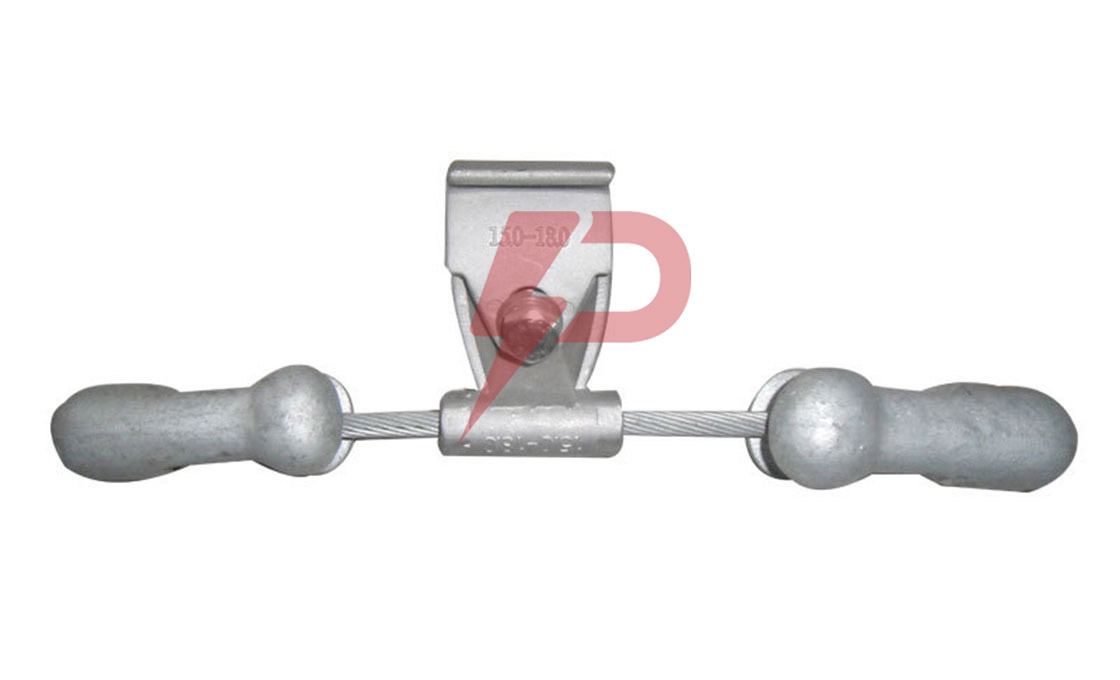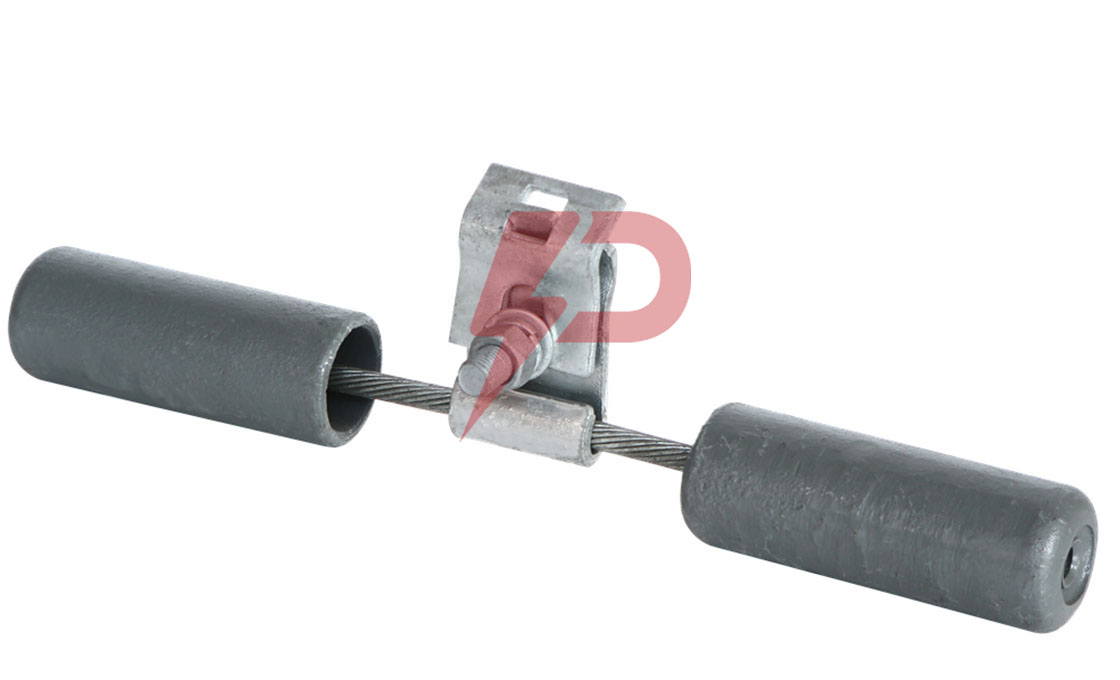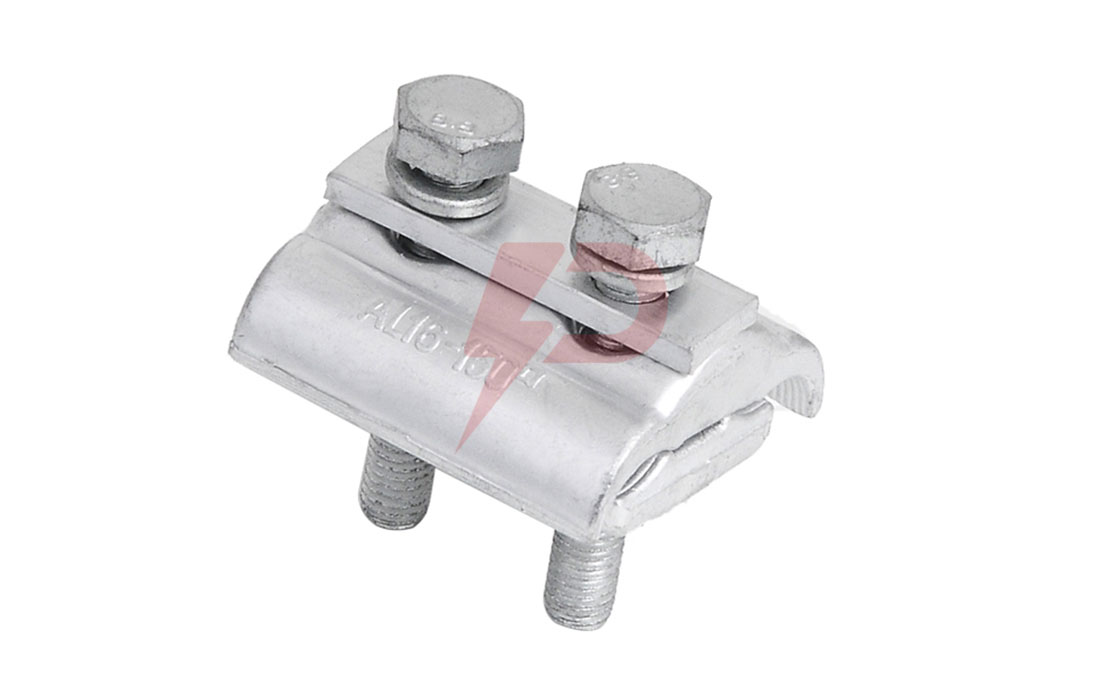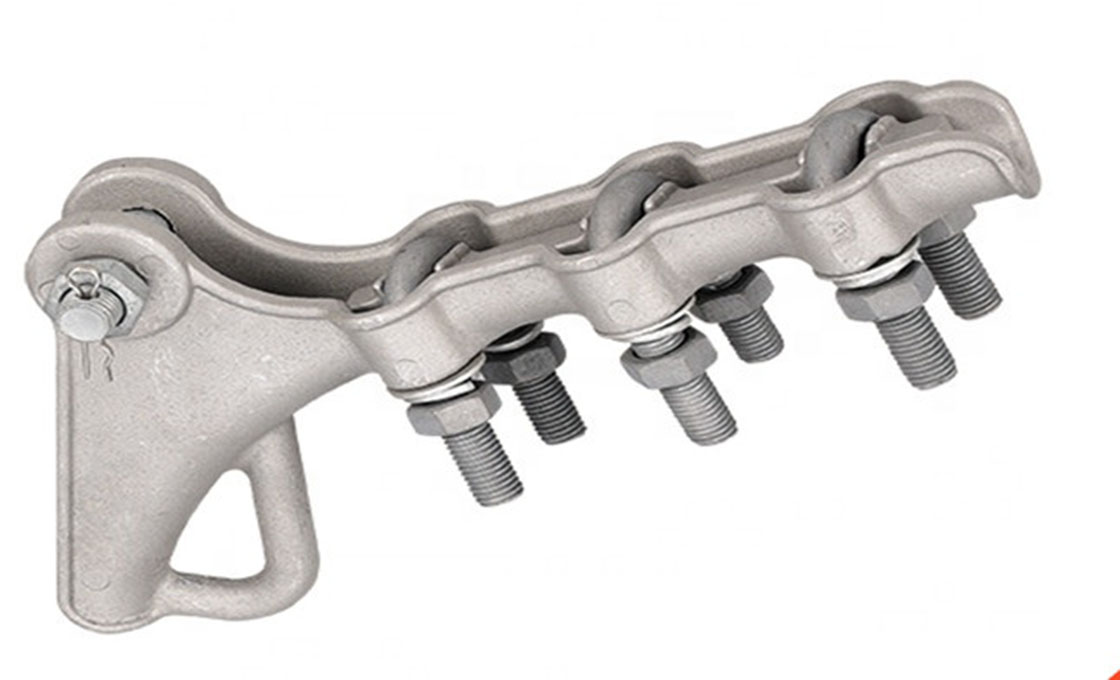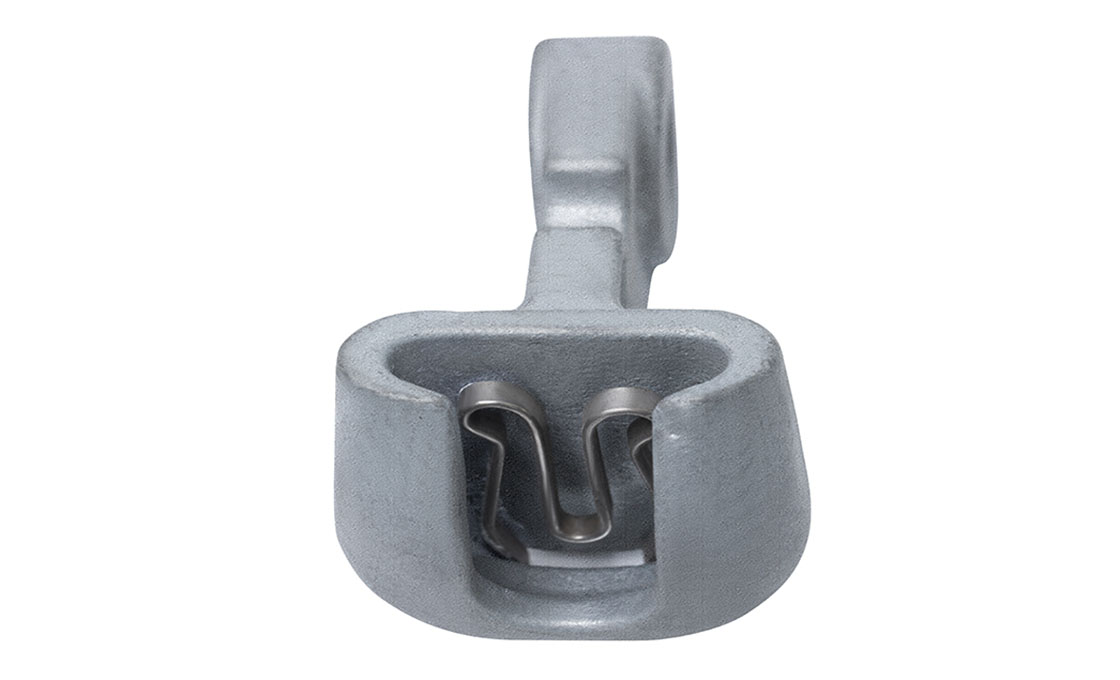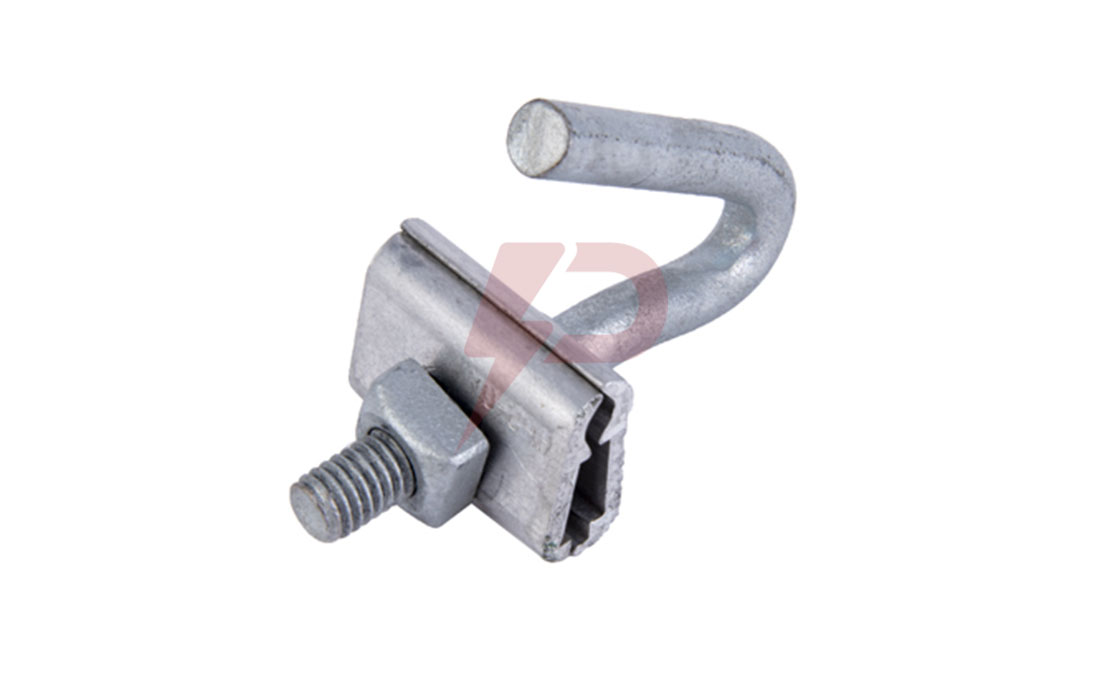Amortiguador Stockbridge
El amortiguador Stockbridge, también conocido como amortiguador de huesos de perro, Es un amortiguador de masa sintonizado diseñado para suprimir las vibraciones inducidas por el viento en líneas aéreas de transmisión.. Consta de dos masas desiguales unidas a longitudes desiguales de cables mensajeros trenzados., conectado mediante una abrazadera central de aleación de aluminio al conductor principal. El amortiguador Stockbridge previene eficazmente los daños por fatiga al convertir la energía inducida por el viento en calor a través de su exclusivo sistema de cuatro resonancias. (4-R) sistema, que proporciona una cobertura de frecuencia más amplia que los diseños tradicionales.
El amortiguador Stockbridge es compatible con varios tipos de conductores, incluido ACSR., ACSS, CAA, y AAAC, Funciona eficazmente a temperaturas de hasta 250 °C.. Su diseño asimétrico presenta pesas en forma de campana con contornos suaves que permiten un rendimiento de corona de hasta 500 kV. La instalación es sencilla utilizando el sistema de abrazadera atornillada., Requiere herramientas y mantenimiento mínimos y al mismo tiempo garantiza un rendimiento constante en diversas condiciones climáticas.. En la industria Rax, FD, FR, FDT, FDZ, DBYJ, Los modelos FRYJ están disponibles.
Características clave:
– Cuatro modos de respuesta de frecuencia natural para una supresión óptima de las vibraciones
– Cable mensajero especial de 19 hilos para una disipación de energía eficiente
– Acabado resistente a la corrosión con bordes redondeados para eliminar la descarga de corona.
– Instalación rápida y sencilla con sistema de pernos de sujeción de aluminio.
– Rendimiento duradero en temperaturas de hasta 250 °C
– Amplio rango de compatibilidad de conductores de 36,2 mm a 46,3 mm de diámetro

Dibujo del amortiguador Stockbridge
| Modelo de amortiguador tipo hueso de perro | Rango de diámetro de alambre aplicable | Especificaciones de cables aplicables | Modelo de amortiguador de diapasón | Peso(kilos) | peso(kilos) | ||
| (milímetros) | ACSR | Alambre trenzado de aluminio | Alambre de acero | ||||
| FDB-1Y01 | 7.6~8,79 | LGJ-35/6 | LJ-35 | GJ-35 | FR-2Y01 | 1.55 | 1.3 |
| FDB-1Y02 | 8.8~10.09 | LGJ-50/8 | LJ-50 | GJ-50 | FR-2Y02 | 1.55 | 1.3 |
| FDB-1Y03 | 10.1~11.49 | LGJ-70/10 | LJ-70 | GJ-70 | FR-2Y03 | 1.55 | 1.3 |
| FDB-2Y04 | 11.5~13.1 | LGJ-50/30 | LJ-95 | GJ-100 | FR-2Y04 | 1.55 | 1.5 |
| FDB-2Y05 | 13.11~13,99 | LGJ-70/40 | FR-2Y05 | 1.55 | 1.5 | ||
| LGJ-95/20 | |||||||
| FDB-2Y06 | 14.0~14.81 | LGJ-120/7 | LJ-120 | FR-3Y06 | 2.1 | 1.5 | |
| FDB-3Y07 | 14.81~16,6 | LGJ-95/55 | LJ-150 | FR-3Y07 | 2.1 | 1.8 | |
| LGJ-120/25 | |||||||
| LGJ-150/8 | |||||||
| FDB-3Y08 | 16.61~18.0 | LGJ-120/70 | LJ-185 | FR-3Y08 | 2.1 | 1.8 | |
| LGJ-150/25 | |||||||
| LGJ-150/35 | |||||||
| LGJ-185/10 | |||||||
| FDB-4Y09 | 18.0~20.2 | LGJ-185/25 | LJ-210LJ-240 | FR-4Y09FR-5Y09 | 2.5 | 2.5 | |
| LGJ-185/30 | |||||||
| LGJ-185/45 | |||||||
| LGJ-210/25 | |||||||
| FDB-4Y10 | 20.21~22,6 | LGJ-210/35 | LJ-300 | FR-4Y10FR-5Y10 | 2.5 | ||
| LGJ-210/50 | |||||||
| LGJ-240/30 | |||||||
| LGJ-240/40 | |||||||
| LGJ-240/55 | |||||||
| FDB-5Y11 | 22.61~25,2 | LGJ-300/15 | FR-5Y11 | 3.2 | |||
| LGJ-300/25 | |||||||
| LGJ-300/40 | |||||||
| LGJ-300/70 | |||||||
| FDB-6Y12 | 25.21~28.0 | LGJ-400/20 | LJ-400 | FR-5Y12 | 4.6 | ||
| LGJ-400/35 | |||||||
| LGJ-400/65 | |||||||
| FDB-6Y13 | 28.0~30.0 | LGJ-500/35 | LJ-500 | FR-6Y13 | 4.6 | ||
| LGJ-500/45 | |||||||
| FDB-7Y14 | 30.01~32.0 | LGJ-500/65 | FR-6Y14 | 4.6 | |||
| FDB-7Y15 | 32.01~34.0 | LGJ-630/45 | LJ-630 | FR-7Y15 | 6.8 | ||
Preguntas frecuentes (Preguntas frecuentes)
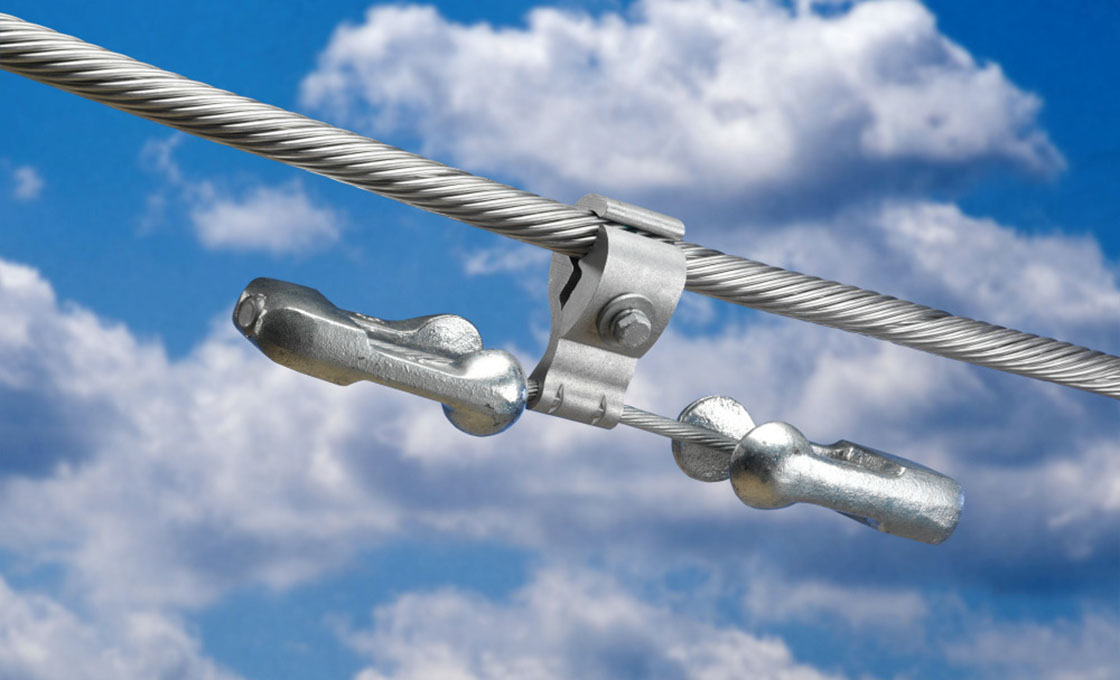
¿Cómo funciona un amortiguador Stockbridge??
El amortiguador opera a través de dos modos de frecuencia natural llamados "volando".’ y 'meneando'. Cuando el viento provoca vibraciones en el cable, los pesos del amortiguador oscilan, y el cable mensajero se flexiona, disipar energía a través del calor creado por la fricción interna entre los hilos del cable.
¿A qué rango de frecuencia apunta un amortiguador Stockbridge??
Los amortiguadores Stockbridge se dirigen específicamente a las vibraciones eólicas con frecuencias entre 3-150 Hz y amplitudes de milímetros a centímetros.. Estas vibraciones ocurren en el plano vertical y son causadas por la formación alterna de vórtices en el lado de sotavento del cable..
¿En qué se diferencian los amortiguadores Stockbridge modernos de los diseños originales??
Los amortiguadores Stockbridge modernos utilizan pesas metálicas en forma de campana en lugar de bloques de hormigón y presentan una distribución de masa asimétrica.. Este diseño permite múltiples modos y rangos de frecuencia., duplicar el número de picos resonantes de dos a cuatro para una mejor protección.
¿Dónde se deben instalar los amortiguadores Stockbridge??
Los amortiguadores generalmente se instalan en los antinodos más cercanos a cada lado de la abrazadera del aislador., con dos compuertas por vano. Para la serie 1700AA, La compuerta se puede instalar con el peso grande o pequeño mirando hacia la estructura..
¿Qué hace que los amortiguadores Stockbridge sean eficaces para líneas eléctricas??
Los amortiguadores Stockbridge previenen los daños por fatiga controlando las vibraciones dentro de los límites aceptados internacionalmente., Mantener la capacidad de amortiguación en todas las temperaturas., permanecer libre de corona a tensión máxima, y no requiere mantenimiento durante toda la vida útil de la línea.
¿Cómo se instalan los amortiguadores Stockbridge??
La instalación requiere colocar la compuerta a distancias específicas de los puntos de fijación de la estructura., aflojando el perno para la entrada de cables, colgando el amortiguador en el conductor, y apretando a los valores de torque recomendados o hasta que el cabezal de separación se corte.
¿Qué tipos de oscilaciones afectan las líneas eléctricas??
Las líneas eléctricas experimentan tres tipos principales de oscilaciones: galope (0.08-3 Hz, amplitud del medidor), vibración eólica (3-150 Hz, amplitud de milímetro-centímetro), y vibración inducida por la estela (0.15-10 Hz, amplitud en centímetros). Los amortiguadores Stockbridge abordan principalmente las vibraciones eólicas.


